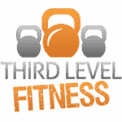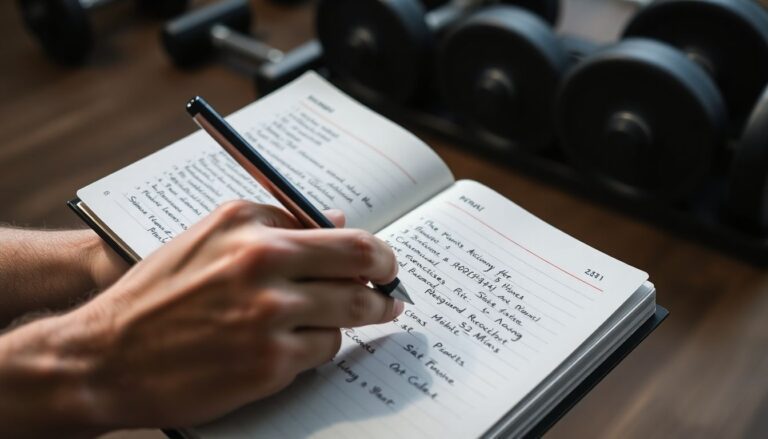So, you’re thinking about lifting weights? That’s a fantastic idea. Getting started with strength training can feel a bit overwhelming, especially when you see all the equipment and hear people talking about different exercises. But honestly, it’s not as complicated as it might seem. This guide is all about breaking down the basics of strength training for beginners, so you can feel confident walking into the gym and start building a stronger you, one step at a time. We’ll cover what you need to know to get going safely and effectively.
Key Takeaways
- Focus on learning proper form for each exercise before trying to lift heavy weights.
- Start with a simple routine that works all major muscle groups, and gradually increase the challenge.
- Warm up your muscles before each workout and allow for rest days to help your body recover and build muscle.
- Listen to your body; if something feels painful, stop and rest instead of pushing through it.
- Consistency is more important than intensity when you’re first starting out.
Getting Started With Strength Training
Starting strength training can feel a bit overwhelming, right? There’s a lot of information out there, and it’s easy to get lost in all the different exercises and equipment. But honestly, it doesn’t have to be complicated. Think of it as learning a new skill, like cooking or gardening. You start with the basics, and before you know it, you’re making great progress.
Understanding The Basics Of Strength Training
Strength training is simply about challenging your muscles with some form of resistance. This could be anything from lifting weights, using resistance bands, or even just using your own body weight. The main idea is to make your muscles work harder than they normally do. This process helps them get stronger and grow over time. It’s not just about looking good; it has some pretty amazing benefits for your overall health.
- Burn more calories: Muscle burns more calories than fat, even when you’re just sitting around. So, the more muscle you build, the more your body works for you.
- Reduce injury risk: Strong muscles support your bones and joints, making your body more resilient to everyday stress and accidental falls.
- Boost your mood and confidence: Seriously, there’s a great feeling of accomplishment that comes with getting stronger. Plus, the endorphins released during exercise are natural mood lifters.
It’s always a good idea to chat with your doctor before you start any new exercise program, especially if you have any health concerns or past injuries. They can give you the green light and offer any specific advice.
Benefits Of A Consistent Routine
Sticking with a strength training routine offers a lot more than just stronger muscles. It’s about building a healthier, more capable you. When you train consistently, you’re not just lifting weights; you’re investing in your long-term well-being. This consistency helps improve your heart health, can lower blood pressure, and even improve sleep quality. It’s a powerful tool for staying active and independent as you get older. Think about it: being able to easily carry groceries or play with your kids or grandkids without getting tired is a huge win.
Setting Realistic Expectations
When you’re just starting out, it’s super important to be patient with yourself. You won’t be lifting super heavy weights or doing advanced moves on day one, and that’s totally okay. Your main goal for the first few weeks should be learning the correct way to do each exercise. Focus on mastering the movements rather than trying to lift the most weight. Building strength is a marathon, not a sprint. Celebrate the small wins, like completing a set with good form or feeling a little stronger each week. If you’re looking for some guidance on how to start, consider checking out local gyms that offer personalized training options.
Remember, consistency is key. Showing up and doing what you can, even on days you don’t feel like it, will lead to progress over time. Don’t get discouraged if you don’t see dramatic changes immediately. Your body is adapting, and that takes time.
Preparing For Your First Workout
Alright, so you’re ready to hit the gym for your first strength training session. That’s fantastic! Before you jump into lifting weights, there are a few things to sort out to make sure you have a good experience and stay safe. Think of this as getting your gear ready before a big game.
The Importance Of A Dynamic Warm-Up
Skipping the warm-up is like trying to start a car on a freezing morning without letting the engine warm up – it’s just not a good idea. A dynamic warm-up gets your blood flowing and prepares your muscles and joints for the work ahead. This means less chance of pulling something or feeling stiff later.
Here’s a simple way to get started:
- Light Cardio: Spend about 5 minutes doing something easy like walking on a treadmill or using an elliptical. Just get your body moving.
- Arm Circles: Do about 10-15 forward and 10-15 backward. Keep them controlled.
- Leg Swings: Hold onto something for balance and swing one leg forward and backward 10-15 times, then side to side 10-15 times. Switch legs.
- Torso Twists: Stand with your feet shoulder-width apart and gently twist your upper body side to side. Do about 10-15 twists each way.
Remember, the goal here isn’t to get tired, but to feel a little warmer and more mobile. It sets the stage for a better workout.
Choosing The Right Equipment
When you’re starting out, you don’t need a lot of fancy gear. Focus on the basics. You’ll likely be using dumbbells, barbells, resistance bands, and maybe some machines.
- Dumbbells: These are great for a lot of exercises. Start with a lighter set. You should be able to do 8-12 reps with good form, and the last couple of reps should feel challenging but not impossible.
- Resistance Bands: These are super versatile and good for adding resistance without heavy weights. They come in different strengths, so you might need a couple.
- Machines: Gym machines can be helpful because they often guide your movement, which can be good for learning. Just make sure you adjust them to fit your body.
Don’t feel pressured to use the heaviest weights or the most complicated machines right away. Your first few workouts are about learning how to move your body correctly.
Focusing On Proper Form
This is probably the most important part of starting strength training. Good form prevents injuries and makes sure you’re actually working the muscles you intend to. It’s better to lift a lighter weight with perfect form than a heavy weight with bad form.
Here’s what to keep in mind:
- Posture: Stand or sit up straight, keep your chest up, and engage your core muscles (imagine gently pulling your belly button towards your spine).
- Controlled Movements: Don’t rush through the exercises. Move slowly and deliberately, focusing on the muscle doing the work.
- Breathing: Exhale when you exert effort (the hardest part of the movement) and inhale as you return to the starting position. Holding your breath can increase blood pressure and make you feel dizzy.
If you’re unsure about how to do an exercise, don’t be afraid to ask a gym staff member or watch a reliable video tutorial. It’s worth the extra effort to get it right from the start.
Building Your Foundational Strength
So, you’re ready to start building some real strength. That’s awesome! It can feel a bit overwhelming at first, with all the different exercises and equipment out there. But honestly, it doesn’t have to be complicated. The main idea is to get your muscles working against some kind of resistance. Think of it like this: you want to train movements, not just individual muscles. This means picking exercises that work multiple parts of your body at once.
Essential Movements For Beginners
To get a good, well-rounded workout, you should aim to include exercises that cover the basic ways your body moves. A good rule of thumb is to include something that lets you:
- Push something away from your body.
- Pull something towards your body.
- Work your legs.
- Engage your core.
Focusing on these movement patterns will help you build a strong base. It’s better to start with movements that use a lot of muscles, rather than trying to isolate just one. This approach helps you get stronger overall and makes your workouts more efficient. For example, bodyweight squats are a fantastic way to start building lower body strength, working your quads, glutes, and hamstrings all at once. You can find great resources on beginner calisthenics moves to get you started.
Targeting Major Muscle Groups
When you’re starting out, it’s smart to hit all the big muscle groups. This not only helps you build a balanced physique but also contributes to your overall health. You don’t need a super long list of exercises. Just a few key movements can make a big difference. Aim to include exercises for your legs, your chest and shoulders (pushing movements), your back and biceps (pulling movements), and your core.
Understanding Sets, Reps, And Weight
This is where things can get a little technical, but we’ll keep it simple. When you do an exercise, you’ll typically do a group of repetitions, called a set. You’ll then rest for a bit before doing another set.
Here’s a basic breakdown:
- Sets: Usually, beginners start with 2-3 sets of an exercise.
- Reps: This is the number of times you perform the exercise in one set. For building strength and muscle, aiming for 8-12 reps per set is a good starting point.
- Weight: The weight you choose should be challenging enough that the last couple of reps in each set feel difficult, but not so heavy that your form breaks down. If you can easily do more than 12 reps, the weight is likely too light. If you can’t complete 8 reps with good form, it’s too heavy.
The most important thing when you’re starting is to get the movements right. Don’t worry too much about lifting heavy weights right away. Focus on learning how to do each exercise correctly. Your body will thank you for it, and you’ll be less likely to get hurt. As you get stronger, you can gradually increase the weight or the number of reps.
Remember, consistency is key. Stick with it, and you’ll start to see and feel the progress before you know it.
Sample Exercises For Beginners
Alright, so you’re ready to actually start lifting some stuff. That’s the exciting part! But where do you begin? You don’t need to do a million different exercises. Focusing on a few key movements that work multiple muscles is a smart way to build a solid foundation. Think of it like building a house – you need strong support beams before you start adding the fancy stuff.
Lower Body Strength Builders
Your legs and glutes are huge muscle groups, and working them will give you a great bang for your buck. Plus, strong legs help with pretty much everything else you do.
- Squats: These are king. You can do them with just your bodyweight to start. Stand with your feet shoulder-width apart, chest up, and lower your hips as if you’re sitting into a chair. Keep your back straight and go as low as you comfortably can, then push back up through your heels.
- Lunges: Great for balance and working each leg individually. Step forward with one leg, lowering your hips until both knees are bent at about a 90-degree angle. Make sure your front knee stays behind your toes. Push off your back foot to return to the start, then switch legs.
- Glute Bridges: Lie on your back with your knees bent and feet flat on the floor. Lift your hips off the ground, squeezing your glutes at the top. Lower back down slowly. This is a good one for activating those glute muscles.
Upper Body Pushing Movements
This category covers exercises where you’re pushing weight away from your body, like working your chest, shoulders, and triceps.
- Push-ups: A classic for a reason. Start on your hands and knees if regular push-ups are too tough. Keep your body in a straight line from head to heels, lower your chest towards the floor, and push back up. Focus on controlled movement, not speed.
- Dumbbell Bench Press: Lie on a bench with a dumbbell in each hand. Lower the dumbbells towards your chest with control, keeping your elbows at a slight angle, then press them back up.
- Overhead Press (Dumbbell or Barbell): Stand or sit with a weight at shoulder height. Press the weight straight up overhead until your arms are fully extended. Lower it back down with control.
Upper Body Pulling Movements
These are the opposite of pushing – you’re pulling weight towards you, working your back and biceps.
- Dumbbell Rows: Hinge at your hips with a flat back, letting one dumbbell hang down. Pull the dumbbell up towards your chest, squeezing your shoulder blade. Lower it back down. You can do this with one arm at a time, using a bench for support.
- Lat Pulldowns: If you have access to a machine, this is a great way to work your back muscles. Sit at the machine, grab the bar with an overhand grip, and pull it down towards your chest, leaning back slightly. Control the weight as it goes back up.
- Bicep Curls: Stand with a dumbbell in each hand, palms facing forward. Keeping your elbows tucked in, curl the weights up towards your shoulders. Lower them back down slowly.
Core Strengthening Exercises
Your core is your center of power. A strong core helps with everything from posture to lifting heavier weights.
- Plank: Get into a push-up position, but rest on your forearms instead of your hands. Keep your body in a straight line from head to heels, engaging your abs. Hold this position for as long as you can with good form.
- Crunches: Lie on your back with your knees bent. Place your hands behind your head or across your chest. Lift your shoulders off the floor using your abs, then lower back down.
- Bird-Dog: Start on your hands and knees. Extend one arm straight forward and the opposite leg straight back, keeping your core tight and your back flat. Hold for a second, then return to the start and switch sides. This is fantastic for stability.
Remember, the goal here is to learn the movements and get comfortable. Don’t worry about lifting super heavy right away. Good form is way more important than the amount of weight you’re using when you’re starting out.
Structuring Your Weekly Workouts
Alright, so you’ve got the basics down and you’re ready to start lifting. But how often should you actually hit the gym, and how do you make sure you’re not overdoing it? Figuring out your weekly workout schedule is super important for seeing results and, you know, not getting injured. It’s all about finding that sweet spot that works for your body and your life.
Frequency For New Lifters
When you’re just starting out, your body needs time to adjust to the new demands you’re placing on it. Aim for two to three strength training sessions per week. The key here is to give your muscles enough time to recover and rebuild between workouts. Trying to go every single day is a recipe for burnout and potential injury. Think of it like this: you want to challenge your muscles, but then let them get stronger while you rest. This approach helps build a solid foundation without overwhelming your system. You can find some great beginner-friendly routines that follow this principle to help you build your own workout routine.
Balancing Workout Days And Rest
Rest days aren’t just downtime; they’re when the actual muscle growth happens. So, make sure you’re not working the same muscle groups on back-to-back days. A common and effective strategy for beginners is to alternate workout days with rest days. For example, you could train on Monday, Wednesday, and Friday, giving you Tuesday, Thursday, Saturday, and Sunday for recovery. Another popular split is to focus on different muscle groups on different days. You might do lower body one day and upper body the next. This allows specific muscles to recover while you work others. Whatever you choose, listen to your body. If you’re feeling really sore or fatigued, it’s okay to take an extra rest day.
Listening To Your Body’s Signals
This is probably the most important part of structuring your week. Your body will tell you what it needs if you pay attention. Feeling a sharp pain during an exercise? Stop. Feeling generally wiped out and unmotivated? Maybe a rest day or some light activity like walking is what you need. Don’t push through pain – that’s how injuries happen. Instead, focus on consistency over intensity when you’re starting. It’s better to do a slightly lighter workout with good form than to push too hard and have to take a week off because you’re hurt. Keep a workout journal to track how you feel after each session; this can be super helpful in understanding your body’s recovery patterns.
Progressing Your Strength Journey
So, you’ve been hitting the gym, getting the hang of the exercises, and feeling a bit stronger. That’s awesome! But now, you might be wondering, ‘What’s next?’ It’s totally normal to hit a point where things start to feel a little too easy. This is where progression comes in, and it’s the secret sauce to keep getting results. Think of it like leveling up in a game; you need to keep challenging yourself to see new levels.
Gradually Increasing The Challenge
Sticking with the same weights and reps forever means your body gets comfortable, and when your body gets comfortable, it stops changing much. To keep building strength and muscle, you’ve got to give it a reason to adapt. This doesn’t mean going crazy and doubling your weights overnight, though. It’s all about making small, smart changes.
Here are a few ways to make your workouts a little tougher:
- Increase the Weight: This is the most obvious one. If you can easily complete all your reps with good form, it’s probably time to add a little more weight. Even a small jump, like 2.5 or 5 pounds, can make a difference.
- Do More Reps: If you’re not ready to increase the weight, try doing an extra rep or two for each set. This still challenges your muscles in a new way.
- Add More Sets: Instead of three sets, try four. This increases the total volume of work your muscles are doing.
- Decrease Rest Time: Shortening the time you rest between sets can make your workout more intense and improve your endurance.
- Change the Exercise: Swap out an exercise for a similar one that’s a bit more challenging. For example, move from a standard push-up to incline push-ups or from bodyweight squats to goblet squats.
The key is to introduce one change at a time. This way, you can see how your body responds and make sure you’re not overdoing it. Trying to change too many things at once can lead to burnout or even injury.
When To Adjust Your Routine
How do you know when it’s time to make these adjustments? A good rule of thumb is when you can comfortably complete your target number of reps for all sets with good form. For example, if your goal is 3 sets of 10 reps with a certain weight, and you find yourself breezing through the last few reps of the last set, that’s a sign. It usually takes about 4-6 weeks of consistent training with a specific weight before you need to increase it.
It’s also important to listen to your body. If you’re feeling overly fatigued, sore for days on end, or experiencing pain, it might be a sign that you’re pushing too hard or not recovering enough. In that case, it might be better to stick with your current routine for another week or focus on recovery rather than increasing the challenge.
Staying Motivated For The Long Haul
Progress isn’t always linear, and that’s okay. There will be days when you feel strong and days when you feel like you’re not moving forward. Don’t get discouraged!
Here are some tips to keep your motivation high:
- Track Your Progress: Keep a workout journal or use an app to log your weights, reps, and sets. Seeing how far you’ve come is a huge motivator.
- Set New Goals: Once you’ve hit a milestone, set a new one. Maybe it’s lifting a certain weight, completing a specific number of reps, or trying a new exercise.
- Find a Workout Buddy: Having someone to train with can make workouts more fun and help you stay accountable.
- Celebrate Small Wins: Acknowledge your achievements, no matter how small. Finished a tough workout? Give yourself a pat on the back!
- Mix It Up: If you’re feeling bored, try a new class, a different type of workout, or even just rearrange your gym routine. Variety can keep things fresh and exciting.
Keep Going!
So, you’ve taken the first big step into strength training, and that’s seriously awesome. Remember, consistency is key here. Don’t get discouraged if you don’t see huge changes overnight; building strength is a journey, not a race. Focus on using good form, listening to your body, and celebrating those small wins along the way – like lifting a little heavier or doing one more rep. Keep showing up, keep learning, and you’ll be amazed at what you can achieve. You’ve got this!
Frequently Asked Questions
How often should I lift weights when I’m just starting out?
When you’re new to lifting, aim to work out two days each week. Make sure you have at least one day of rest between sessions so your muscles can recover and grow stronger. Don’t try to lift on consecutive days at first.
What’s the best way to choose the right weight to lift?
The weight should be challenging enough that the last few reps of your set are tough to complete, but not so heavy that your form breaks down. If you can easily do more than the target number of reps, the weight is too light. If you can’t complete the target reps with good form, it’s too heavy. Start lighter and see how it feels.
Why is warming up so important before lifting weights?
Warming up gets your blood flowing and prepares your muscles and joints for the work ahead. This helps reduce your risk of getting hurt. A good warm-up can include light cardio like a brisk walk and some dynamic stretches like leg swings.
What are the main types of exercises I should focus on?
A good beginner routine should include exercises that work your whole body. Think about movements like pushing something away from you (like a push-up), pulling something towards you (like a row), and exercises for your legs and core. Focusing on these main movements helps build overall strength.
How many repetitions and sets should I do?
For beginners, a good starting point is to aim for 8 to 12 repetitions per set. Do 1 to 3 sets of each exercise. The key is to focus on performing each movement correctly rather than trying to lift as much as possible.
What should I do if I feel pain during a workout?
If you feel sharp or unusual pain, stop the exercise immediately. It’s important to listen to your body. Pushing through pain can lead to injury. Rest the sore area, and if the pain continues, it’s a good idea to consult with a doctor or physical therapist.




